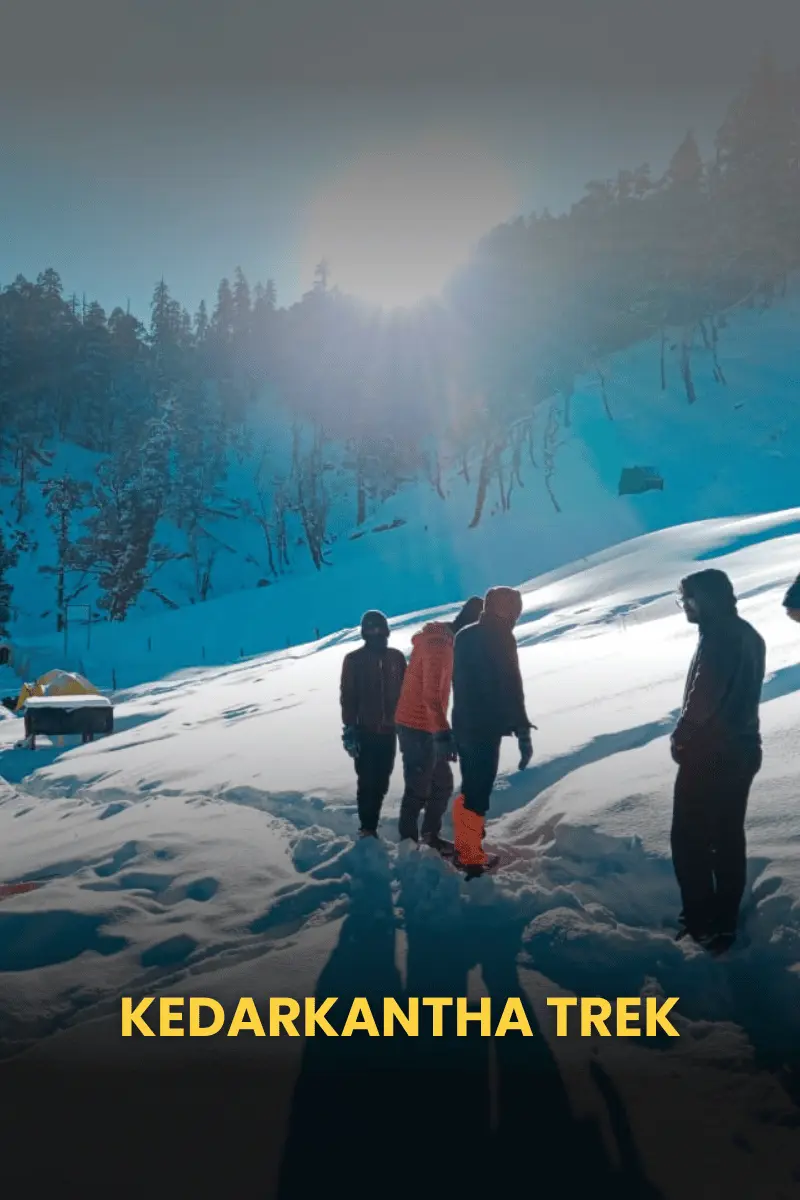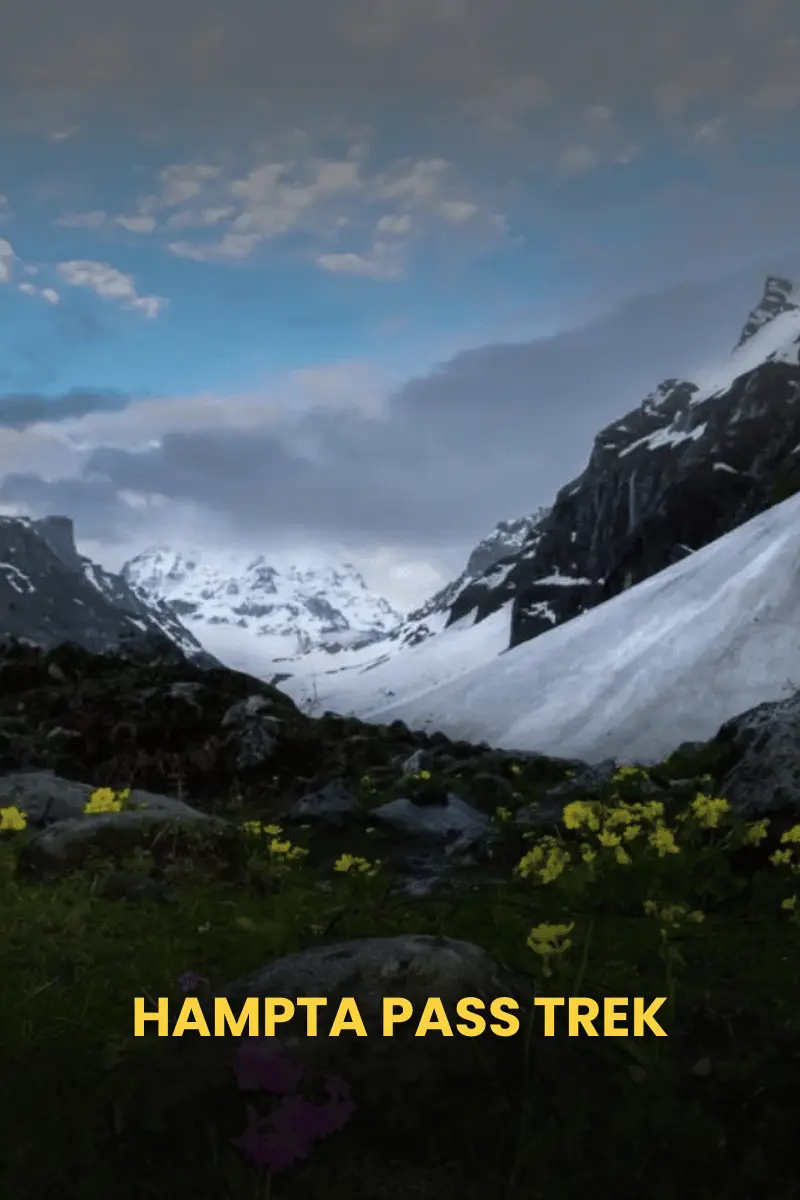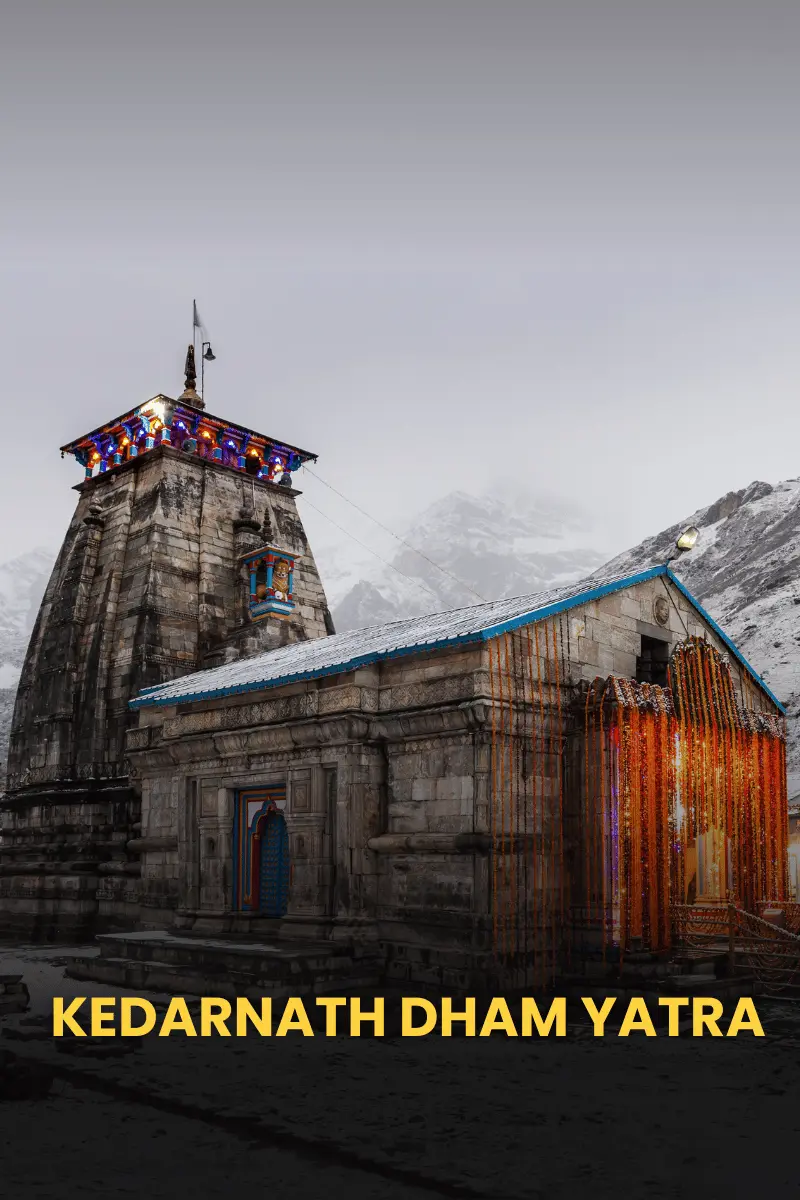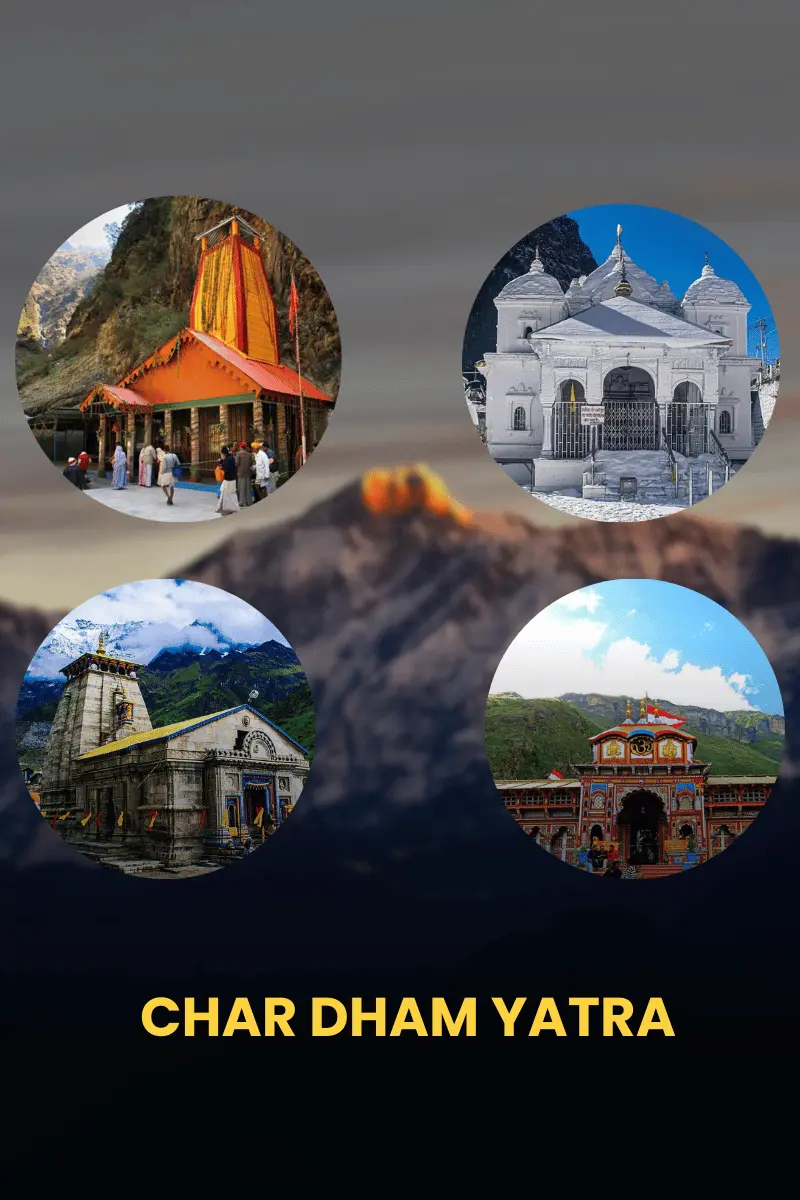
351+
Trips Planned
30+
Personalised Planned
50+
Tours Guide
99%
Client Satisfaction
The Sar Pass Trek is a scenic and moderately challenging trekking route located in the state of Himachal Pradesh, within the stunning Parvati Valley region. Known for its rich natural beauty, snow-covered trails, and ever-changing landscapes, the trek offers a memorable Himalayan experience for both beginners and adventure seekers.
Starting from Kasol, a popular mountain village and backpackers’ hub, the trek takes you through thick pine forests, traditional Himachali villages, open meadows, and snowfields. The trail gradually ascends through charming campsites such as Grahan, Mung Thach, and Nagaru, before crossing the majestic Sar Pass—perched at an altitude of around 13,850 feet (4,220 meters).
One of the highlights of the Sar Pass Trek is the exciting snow slide after crossing the pass, a unique and fun experience that adds to the thrill of the journey. The route also provides sweeping views of the surrounding peaks of the Parvati and Tosh valleys, offering a breathtaking backdrop throughout the trek.
While not technically difficult, the Sar Pass Trek requires a fair level of fitness and stamina due to the gradual altitude gain and cold weather conditions, especially near Nagaru and the pass. Proper layering and acclimatization are important to enjoy the journey safely and comfortably.
The trek is usually completed over 5 days, making it a compact yet rewarding adventure. It is best undertaken between May and early July, when the trails are clear, the snow cover is manageable, and the weather is mostly stable.
Overall, the Sar Pass Trek is a well-balanced Himalayan trek—offering snow adventure, forest trails, village culture, and alpine beauty. It is ideal for those seeking their first snow trek or a short escape into the serene high-altitude wilderness of Himachal.
The Sar Pass Trek begins from Kasol, a quaint village in the Parvati Valley famous for its vibrant culture and scenic beauty. Early in the morning, you will start your trek from Kasol to Grahan Village. This trail takes you through dense pine and deodar forests along the banks of the Parvati River.
As you trek, the fresh mountain air and towering trees will energize you for the days ahead. The trail is mostly uphill but gradual, perfect for acclimatization. Grahan Village, your campsite for the night, is a small settlement nestled in the mountains where you can rest and soak in the natural beauty.
Camping here lets you experience the peaceful Himalayan wilderness under a canopy of stars. Rest well to prepare for the more challenging days ahead.
After breakfast, your journey continues from Grahan to Mung Thach. The trail winds through thick forests and beautiful meadows. Along the way, you’ll cross small streams and enjoy panoramic views of the snow-capped peaks surrounding you.
Mung Thach is an expansive meadow, ideal for setting up camp and relaxing. It offers an excellent opportunity to witness the unique flora and fauna of the region. The climb to Mung Thach is moderate, giving you enough time to acclimate while enjoying the breathtaking surroundings of the Sar Pass Trek.
Spend your evening amidst nature’s tranquility and prepare for the next day’s trek to Nagaru.
The trek from Mung Thach to Nagaru takes you deeper into the Himalayan wilderness. You will cross several beautiful alpine meadows and possibly encounter herds of grazing sheep and horses. The trail ascends gradually, leading you through rocky terrains and patches of snow depending on the season.
Nagaru is a charming meadow surrounded by tall pine forests and snow-capped peaks. This campsite is known for its spectacular views and serene atmosphere, perfect for relaxation after the day’s trek. The weather can be quite cold here, so warm clothes are essential.
This day marks an important step closer to the famed Sar Pass, giving you glimpses of the majestic landscapes to come.
This is the most challenging and exciting day of the Sar Pass Trek, as you will cross the iconic Sar Pass itself. The trail starts with a steep ascent through rocky and sometimes snowy terrain.
Crossing the Sar Pass, a high-altitude meadow covered with snow for most of the year, is a rewarding experience. The views of the surrounding Himalayan peaks are truly breathtaking. Take your time here to absorb the sheer beauty and capture memorable photographs.
After crossing the pass, you will descend to Biskeri Thach, another beautiful meadow surrounded by snow and pine forests. Set up camp and enjoy the tranquility of this pristine location. The overnight stay here offers a peaceful retreat after the day’s strenuous climb.
The final day of the Sar Pass Trek is a descent back towards civilization. You will trek from Biskeri Thach to Kasol via Barshaini. The trail takes you through dense forests and charming villages, providing a pleasant end to your journey.
Barshaini is the last village on the trail, where many trekkers stop for refreshments and to soak in the local culture. From here, you will descend further down to Kasol, completing the trek.
Kasol welcomes you back with its vibrant cafes and beautiful river views, giving you a perfect place to relax and celebrate the successful completion of your Sar Pass Trek Himachal Pradesh.
Note: The itinerary is subject to change. For the latest details and updates, please feel free to contact us through the form on our website.
Reaching the starting point of the Sar Pass Trek is easy and well-connected by road and rail. The trek begins from Kasol, a small village in Himachal Pradesh, located in the Parvati Valley, about 30 km from Bhuntar in the Kullu district.
Here’s how you can get there:
By Air:
The nearest airport is Bhuntar Airport (Kullu-Manali Airport), located about 31 km from Kasol. It is connected to Delhi and Chandigarh through limited but regular flights. From Bhuntar, you can hire a taxi or take a local bus to reach Kasol. The drive takes approximately 1.5 to 2 hours depending on road conditions.
By Train:
The nearest major railway station is Chandigarh Railway Station, situated around 296 km from Kasol. From Chandigarh, you can hire a taxi or take a bus to Bhuntar or Kullu, and then continue onward to Kasol. Another option is Pathankot Railway Station, which is around 295 km from Kasol, but road connectivity is slightly longer from this route.
By Road:
Kasol is well-connected by road to Delhi, Chandigarh, Manali, and Kullu. Regular Volvo buses, HRTC buses, and private taxis are available from Delhi and Chandigarh to Bhuntar or Manikaran. From Bhuntar, local buses and shared cabs are available for the final stretch to Kasol.
Delhi to Kasol: Approx. 510 km, 12–14 hours by road
Chandigarh to Kasol: Approx. 270 km, 8–9 hours by road
Manali to Kasol: Approx. 75 km, 3–4 hours by road
The Sar Pass Trek is considered a moderate-level trek, suitable for beginners with basic fitness and stamina. The trail involves walking for several hours each day, climbing gradual slopes, and navigating snowy terrain on summit day. Basic preparation like regular walking, stair climbing, or cardio exercises is recommended before the trek.
The Sar Pass Trek typically spans 5 days, covering a distance of approximately 48 kilometers. The trekking days usually involve 4–8 hours of walking, depending on the terrain and weather conditions. The itinerary includes key campsites like Grahan, Mung Thach, Nagaru, Biskeri Thach, and ends at Barshaini.
Yes, it is strongly recommended to go with a certified trek guide or join an organized trek. The trail passes through forests, snowfields, and isolated campsites where navigation may become difficult, especially in snow or fog. A trained trek leader ensures your safety, monitors altitude symptoms, and handles emergencies or route changes.
The best time to undertake the Sar Pass Trek is between May and early July. During this time, the trails are accessible, the snow remains on higher sections (especially at Sar Pass), and the weather is relatively stable. Daytime temperatures are pleasant, while nights can be cold, especially at higher camps like Nagaru.
Both Sar Pass Trek and Hampta Pass Trek both are great for first-time trekkers. If you want snow slides and forest trails, Sar Pass is ideal. For valleys, river crossings, and dramatic landscape changes, Hampta Pass offers more variety. Choose based on your travel month and what kind of scenery you prefer!
Our Promise: Tailored, Trusted & Hassle-Free Treks

Trips Planned
Personalised Planned
Tours Guide
Client Satisfaction
Trips Planned
Personalised Planned
Tours Guide
Client Satisfaction
Discover New Adventures Awaiting You…





Whether you’re ready to book your trek or just have a few questions, we’re here to assist you
Your adventure is just a call away. Let’s make your journey unforgettable.
WhatsApp us